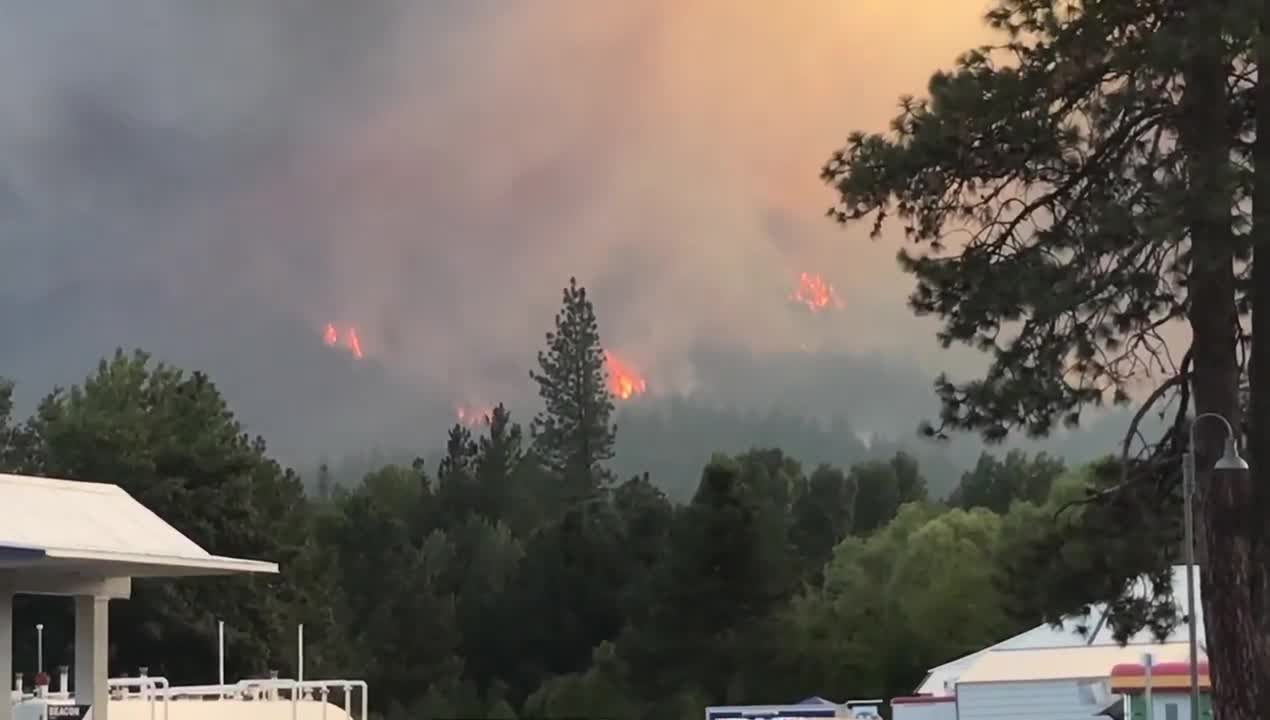

The troubleman shut off the third fuse, then took a fire extinguisher from his truck and unsuccessfully attempted to put the fire out. Noticing the two blown fuses, the troubleman was in the process of shutting off the third when he smelled smoke-looking down, he observed a fire approximately 600 to 800 square feet in size, burning among pine needles beneath the powerlines. The troubleman left and returned at approximately 4:30 p.m., arriving at the power lines 10 minutes later. Access roads were in poor condition, and the troubleman was forced to stop at a bridge undergoing repairs. Īt 1:30 p.m., a PG&E troubleman (a type of lineworker) came to address the resulting power outage. Electric arcing slowly ignited fuels on the ground over the following hours. The tree, in contact with both the line and the ground, created an electrical fault. When the tree fell onto the line, two fuses blew but one remained active, keeping the power line energized. Why the tree fell is unknown-an arborist with Cal Fire said the tree was weakened after burning in the 2008 Butte Lightning Complex, while another arborist hired by PG&E noted possible root rot. At approximately 6:48 a.m., a large Douglas fir, 65 feet tall and 16 inches in diameter, fell onto the power line. Transmission lines (also operated by PG&E) further down the canyon were the cause of the devastating and fatal Camp Fire in 2018. The Dixie Fire began on July 13, 2021, beneath a Pacific Gas and Electric (PG&E) 12-kilovolt power distribution line located on the northern side of the Feather River Canyon in a remote area above Highway 70 and Cresta Dam, midway between Paradise and Belden. Bark beetle-affected forests (especially species common in the Sierra Nevada such as the lodgepole pine) are chemically altered, and the dead and dying trees are more flammable and more susceptible to intense crown fires. The resulting overcrowded forests became more vulnerable to drought, as well as bark beetle infestations that were the primary cause of death for more than 163 million trees in California between 20. Rigorous fire suppression policies in the United States also meant that much of the area burned by the Dixie Fire had little fire history, going back more than 40 years. Reservoirs in the state shrunk, and vegetation dried out to the point where both living and dead conifers were drier than kiln-dried lumber. The Sierra snowpack, measured during its typical peak on April 1, was just 59% of the historical average, and runoff just 20% of the amount forecast. That year also saw further intensification of what scientists have found to be the most extreme megadrought in at least 1,200 years in the Western/Southwestern United States, amplified by high temperatures, low precipitation, and anthropogenic climate change: during the 2021 water year (the period between October 1, 2020, and September 30, 2021), Northern California received less than half of its usual precipitation. 2021 was the hottest summer ever recorded in California.

Timeline Contributing factors įurther information: 2020–2022 North American droughtĪ number of background factors contributed to the size and intensity of the Dixie Fire. The Dixie Fire was the most expensive wildfire in terms of suppression efforts in United States history, costing $637.4 million to fight. Smoke from the Dixie Fire caused unhealthy air quality across the Western United States, including states as far east as Utah and Colorado. It was the first fire known to have burned across the crest of the Sierra Nevada (followed by the Caldor Fire later in the season). non-complex) wildfire in the state's history, burning an area larger than the state of Rhode Island. īy July 23, it had become the largest wildfire of the 2021 California fire season by August 6, it had grown to become the largest single (i.e. The fire damaged or destroyed several small towns or communities, including Greenville on August 4, Canyondam on August 5, and Warner Valley on August 12. non-complex) wildfire in recorded California history, and the second-largest wildfire overall (after the August Complex fire of 2020). The fire began in the Feather River Canyon near Cresta Dam on July 13, 2021, and burned 963,309 acres (389,837 ha) before being 100% contained on October 25, 2021. It was named after Dixie Road, near where the fire started in Butte County. The Dixie Fire was an enormous wildfire in Butte, Plumas, Lassen, Shasta, and Tehama Counties, California.


 0 kommentar(er)
0 kommentar(er)
